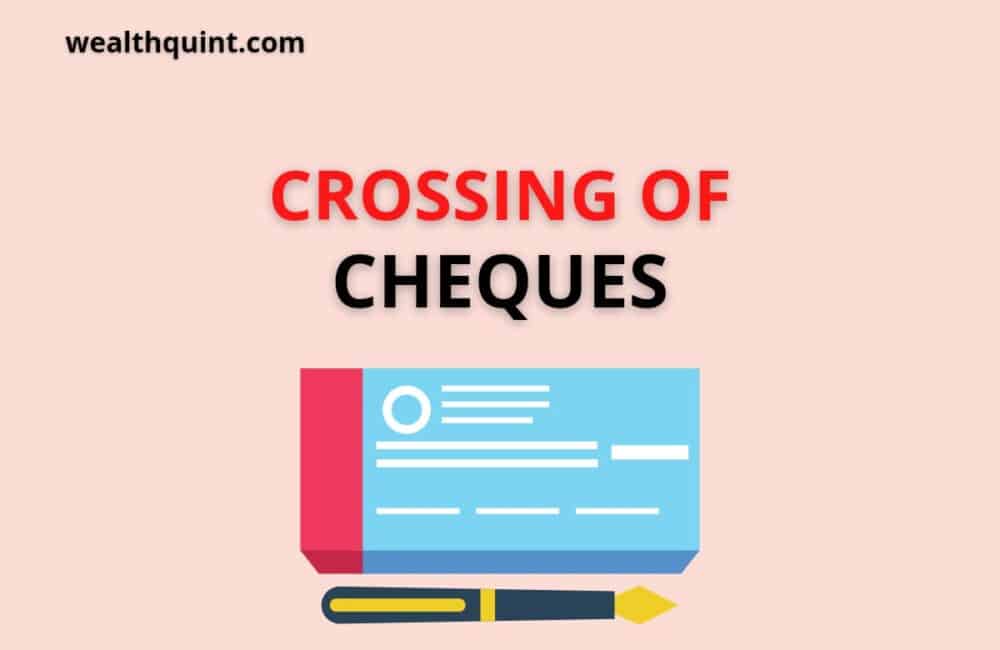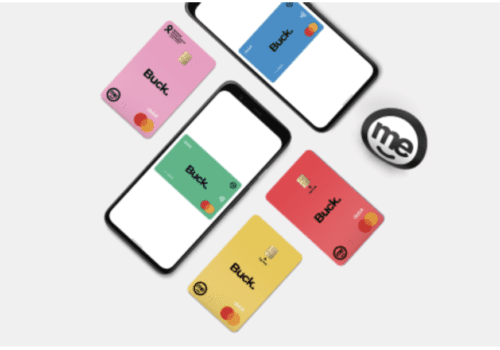Crossing a check is typically done to increase safety. It is done by tracing two parallel transverse lines across the left top corner, either with or without the inclusion of certain words.
The goal of crossing is to prevent the payment of a cheque from being made to an incorrect party by instructing the drawee banker to pay the check amount only to a banker.
What Is Crossing Of Cheques?
Cheques are crossed when two parallel lines with or without words are drawn on their faces, generally at the top left corner of each side. When a cheque is crossed, only its mode of payment is altered.
Payments are no longer made at the counter but into the account of the holder. However, it has no adverse effect on its negotiability. Crossed checks remain negotiable in the same way as uncrossed or open cheques.
They can be negotiated either by delivery to the bearer or by endorsement and delivery to the receiver.
A person who holds a crossed cheque without a bank account has to open a bank account with some bank and deposit the cheque there so that the banker can collect the payment from the drawee banker and credit his account accordingly.
Another option would be to endorse the cheque in favor of a known person who maintains an account in any bank, let him collect the funds in his account in the bank, and then recover the cash from him.
Also Read: What is Cancel Cheque & Why We Need it?
Types Of Crossing Of Cheques
To protect the funds from fraud and forgery, the crossing of Cheque specifies how the cash should be handled. It ensures that the funds must be transferred to the bank account only after receiving a cheque instead of immediately encashing it. Different types of the crossing of cheques are as under
General Crossing Cheque
General crossings, on the face of a cheque (generally, on the top left-hand corner), are lines joining two parallel lines without any words or with words like “and company,” “& Co.” or “not negotiable” in between them.
Restrictive Crossing Cheque
Account payee crossings are defined by wording across the cheque’s face mentioning “A/C payee” between two parallel lines. In this case, the cheque can only be credited to the account of the specified person, so it is not negotiable.
Special Crossing Cheque
A special crossing cheque is adorned with the banker’s name and the words ‘not negotiable’ across its face. A paying banker will pay the amount of a cheque only to the paying banker or to the banker designated in the crossing. Thus, the paying bank will honor a cheque only if ordered through the bank mentioned in the crossing or its representative bank. The name of the banker is more important than the parallel transverse lines in special crossings.
Double Crossing Cheque
Whenever a bank to which a cheque was crossed specifically sent a copy of it to another bank subsequently for collection as its agent, the second bank crossing should indicate that it is serving as an agent of the prior banker to whom the Cheque had been crossed specifically.
Having a cheque crossed ensures the security of the payment. This is a well-known method of protecting the parties to a cheque, ensuring that the right person receives the compensation. Therefore, fraud and wrong payments are reduced and protected against unscrupulous individuals’ theft or encashing of the instrument.
Also Read: What are Duplicate Checks?
Advantages Of Crossing A Cheque
Negotiation is not restricted by the crossing of cheques but offers many advantages.
- Risks resulting from the loss of the Cheque or its forgery are minimized.
- A crossed cheque proceeds are to be paid only to a banker by the paying banker.
- While a collector banker must collect from the customer only and not from an unknown party, the law expects the collector to collect from the customer only.
- Fraudulent individuals cannot, therefore, obtain payments without revealing their true identities.
Disadvantages Of Crossed Cheque?
Cheques must be deposited into accounts promptly. Non-bank customers may experience inconveniences if crossed cheques are deposited. In addition, charges are applied to checkbooks, and banks impose dishonored cheques.
How Do Cross Cheques Differ From Account Payee Cheques?
They are both referring to the same thing. An account payee cheque is also referred to as a crossed cheque. Cheques of this type can only be deposited into an individual’s bank account and cannot be cashed over the counter. The purpose of this is to prevent misuse of the instruments in the event of loss or theft.
Recommended:
How to Fill a Cheque – 5 Steps Cheque Filling Guide
What is Cash Credit & How does Cash Credit Work?
Difference Between Interbank and Intra Bank
Frequently Asked Questions
How Does A Cheque Counterfoil Work?
Companies send cheques to their customers as a return on their investment. Crossed cheques are always sent to avoid negotiating. The counterfoil is a document that reveals the profits and losses of the company instead of containing the trades of the business on its own.
How Important Is The Cheque?
Essentially, a cheque is a document instructing the bank to transfer a certain amount of money from an account belonging to an individual to an account belonging to another individual or company. Thus, payments are made quickly, securely, and conveniently using a cheque.
Does Cheque Refer To Money?
A cheque does not refer to money. Instead, the Cheque instructs the bank to transfer a specific amount from the person’s account to the person whose name it has been drawn.



